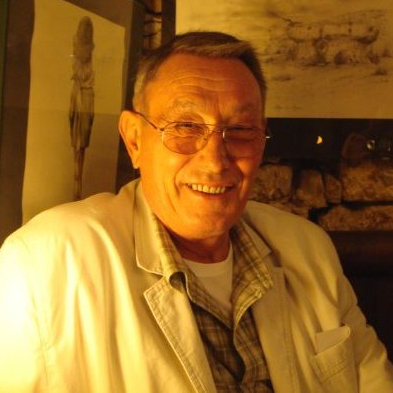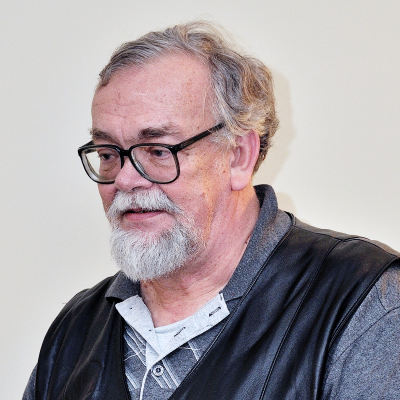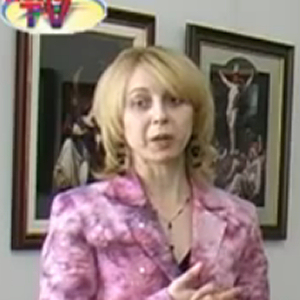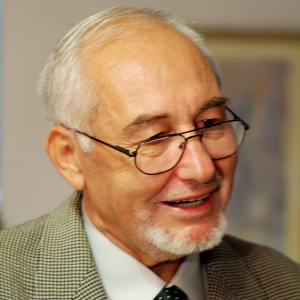

Tapestry is a decorative textures of wool or silk, hand crafted used especially as decoration on house walls or furniture. In other words, tapestry is a textile surface built with a decorative purpose and utilitarian functions. Compared with upholstery, which is a simple textile work, with purpose of covering furniture pieces, tapestry is a work of art.
Tapestry is well know from Antiquity mostly represented by Chinese silk texture (T’ang dynasty textures, Egypt and antic Greek textures comes as a prove). Tapestry flourished in civilizations greatest moments, through out the years and they reflected civilization’s aesthetics inclinations.
In the Middle Ages, tapestry had a purely utilitarian function. Tapestries were originally designed to protect medieval rooms from damp and cold weather or to cover austere walls of big castles or to insulate big rooms in more comfortable quarters. In these early tapestries, isolated figures or compact groups stood out against a background that was generally plain or embellished with plants motifs or flowers, those are called « mille fleurs »
Tapestry became beside painting, sculpture and architectures one of the major visual art forms. . By 1500, Flanders, especially Brussels and Bruges, had become the chief places of production.
In 1663, during the lavish reign of Louis XIV, Les Gobelins factory was founded in Paris employing over 800 artisans in the production of tapestries for the royal court. Other European countries followed, opening factories on behalf of their rulers. Starting with the second half of last century, new tapestry is evolving called “goblen”.
Goblen tapestry thematic is practically unlimited and can vary on dimensions, technical ability and tapestry final destination. Each new product is in fact unique and brings to life a small part of it’s creator fantasy. Once available only for its manufacturer, now they are available for everyone.
In 1981 I saw for the first time a so called “gobelin “, to a friend who obtained the pattern from Germany. It was calling “Sunset”, having 7 colors which have fascinated me.
I asked the pattern and I sewed it, although I didn’t know many things about gobelins sewing technique. Another friend of mine had a book that contained gobelins diagrams for some simple patterns, which had no more than 10 colors, and also black & white patterns which you can see in the Initiate section. For these patterns I used 2 threads from mouline in 6 threads.
Then they appeared patterns made by specialized companies, who contained both, the diagrams as well as the needed threads and canvas for sewing.
I sewed more than 150 patterns that I bought in stores or direct from producer. In many of these patterns I did not liked the combination of colors, so I started to replace them with other colors that it seemed much more appropriate. So I changed in some patterns more than 90 % of colors.
This was highly appreciated by some well-known art critics who visited and varnished my first exhibitions and they recommended me to use this talent in the development of personal models.
Now I use a computer program that allows me to realize models selected by me (especially after the famous paintings, and not only), models that can be seen in section Unique.
I think that only these models can be considered real gobelins (or would be what I understand by gobelins), they have 90 colors above , and being downright remarkable, many of those who have seen them, thought they are photos and they asked me to let themselves to touch the gobelin in order to satisfy that they are actually sewn.


În “The American Heritage® Dictionary of the English Language” Ediţia a IV a, 2000, cuvantul goblen are urmatoarele înţelesuri:
tapiserie in genul tesaturilor creeate de artizanii din Gobelin, Paris, Franta, renumite pentru diversitatea designu-ului pictorial.
Etimologia cuvantului:
Engleza medievala gobelin, din franceza normanda, *gobelin, numele unei stafii care se presupune ar fi bantuit orasul Évreux in secolul XII.
Goblenul este descris ca fiind o tapiserie. La rîndul ei, tapiseria este definita ca o lucrare de arta efectuata cu maşina sau manual, în care desenul rezultă chiar din armatura ei, fiind destinată împodobirii interioarelor.
Tapiseria este cunoscuta înca din Antichitate, dar epoca sa de glorie este cea a Renasterii cînd Aubuson şi Gobelin au devenit centre de referinţă europeană.
În secolul al XVII-lea, în Franţa, Gobelins, denumit dupa numele unei celebre familii de vopsitori de lana din Paris, era un vestit centru de artă decorativă. La începutul secolului, Gobelins cuprindea o manufactură în care lucrau doi maeştrii flamanzi, Marc de Comans şi Françis de la Planche, veniţi în Franţa, în 1601, la cererea regelui Henri IV. În anul 1662, ministrul Colbert, a unificat toţi meşteşugarii regali, atelierele de manufactura, înfiinţând astfel Manufactura Regală, sub conducerea primului pictor al curtii, Charles Le Brun. Tapiseriile acestei manufacturi se executau după cartoanele-proiect ale unor celebrii artişti, precum şi ale unor artişti specializaţi in pictura decorativă: N. Mignard, Antoine şi Charles Coypel, Audran le Jeune, Watteau, Boucher, J.F.Raffaeli, Monet etc.. Pentru tapiseriile de Gobelins, se utilizau subiecte mitologice şi istorice, peisaje şi motive vegetale stilizate, se transpuneau tablouri celebre sau proiecte originale cu caracter decorativ. Manufactura s-a remarcat întotdeauna pentru calitatea excelentă a materialeler şi a vopselurilor folosite, cât şi pentru calitatea manoperei.
Între anii 1694 şi 1697, Manufactura Regala a fost închisă, meşteşugarii specializându-se în goblen, pornind de la tapiseria care se realiza în atelierele din Gobelin. La războaiele de ţesut, faimoşi tapisieri, au realizat copii ale frescelor lui Raphael de la Vatican, cât şi 14 piese comemorative despre realizările lui Ludovic al XIV-lea.
În concluzie, tabloul în goblen de astăzi, realizat printr-o multitudine de puncte, reprezintă o varianta a tapiseriei, realizat însa cu mijloace şi furnituri diferite, inspirate parcă din lucrarile ,,pointilistilor” Goblenul, sau pictura cu acul in ochi de goblen numita si broderie de goblen, s-a bucurat si se bucura de o mare atractivitate. Prelucrarea se realizeaza fie in cusatura goblen punct norvegian, fie in cusatura petit point (punct mic), fie in combinatie cu amandoua.
Broderia goblen la punct mic pe panza de 100 ochiuri/cm2 se realizeaza prin coasere cu firul in doua (sau cu doua fire din cele sase ale firului de muline), reprezentând un proces ce poate dura luni de zile, aceasta depinzând de dimensiunile şi dificultatea picturii originale, cât şi a numărului de culori pe care lucrătorul de goblen le alege. Punctul de goblen norvegian pe panza de 100 ochiuri/cm2 se realizeaza cu firul in trei si cu doua impunsaturi alaturate peste doua fire de panza.
Pentru panzele mai rare, cusatura se realizeaza in acelasi mod dar cu numar crescut de fire. Un model de goblen se poate coase si folosind cele doua feluri de ochiuri in combinatie. De regula fata, mainile si picioarele se executa in punct mic pentru a se putea cuprinde toate detaliile iar partea cea mai mare din goblen se executa cu punct norvegian. In aceasta situatie tabloul capata dimensiuni mai mari si cu detalii bine redate.
Goblenul mai poate fi considerat un simbol al fidelitatii, rabdarii, tenacitatii si ingeniozitatii. Din cele mai vechi timpuri, goblenul, sau broderia pe canavas, au mai fost cunoscute si sub denumirea de “needle-worked tapestry”, canvaswork sau “needlepoint”.
In trecut, “Petit Point”, a fost preferat in mod traditional, atat de catre femeile apartinand atat familiilor regale, cat si a celora din clasa de mijloc. Persoanele apartinand aristocratiei, foloseau fire de lana, matase, fire de metale nobile, aur si argint. Pentru obtinerea desenului pe panza, a goblenului in final, isi foloseau toata imaginatia, inspiratia si sensibilitatea, pentru alegerea nuantelor.
In anii trecuti, realizarea unui goblen implica o munca extraordinara. Se incepea cu impartirea modelului, de cele mai multe ori acesta fiind o poza color mare, cu creionul, in patratele. Pana la cusutul propriu-zis, modelul era pictat pe panza, si aceasta etapa fiind foarte migaloasa, dupa ce patratelele obtinute prin impartirea modelului, erau numarate cu ajutorul lupei. Aceasta munca titanica, este acum usurata datorita aparitiei programelor cu ajutorul carora, pe baza modelui ales, se obtine diagrama, functie de indemanarea si chiar curajul lucratorului de goblen. De ce curaj? Raportand numarul de puncte al unui goblen, la numarul de culori alese, se poate face o idee asupra gradului de dificultate al unui goblen, deci si asupra curajului lucratorului.
Peste hotare, goblenul este si in zilele noastre foarte apreciat si la moda, datorita marii varietati, imbogatind atat modul de decoratiuni traditional, modern, chiar si de lux.
In Romania, lucratorii de goblen, sunt acei anonimi care lucreaza pentru placerea de a lucra, de a se inconjura de frumos. Dupa unii, aceste realizari sunt total lipsite de valoare, dar din punctul lor de vedere, lucrurile nu stau deloc asa. Dupa cum spuneam si mai sus, un goblen este rezultatul combinarii multor elemente, ceea ce nu am spus este ca in punctele unui goblen, fiecare lucrator, mai pune si cate un pic din lumina ochilor, zile, chiar luni din viata. Perioada de tranzitie, economia de piata, au facut ca majoritatea sa nu mai spere doar a se inconjura de frumos, devinind mai pragmatici, sperand sa le vanda, transformandu-le intr-o marfa, schimbandu-le astfel, finalitatea si destinatia. Acest lucru, se intampla foarte rar, si de cele mai multe ori, la preturi care nu oglindesc nici pe departe adevarata lor valoare. De fapt, o evaluare a acestor lucrari, este foarte dificila, dupa cum am incercat sa demonstram pana acum, un goblen fiind rezultatul impletirii foarte multor elemente, unele din ele inestimabile.
Nu negam faptul ca, la fel ca in orice arta, printre sute de lucrari, isi fac loc si kitsch-urile, lucrarile de prost gust. De aceea, suntem de acord de a ne supune lucrarile aprecierilor unor personalitati ale artei plastice si a celei decorative.
In 1981 am vazut pentru prima data un asa zis “goblen”, la o prietena care obtinuse modelul din Germania. Se numea “Apus de soare”, avea 6 culori care m-au fascinat. Am cerut modelul si l-am cusut si eu, desi nu stiam mare lucru despre tehnica coaserii goblenurilor. Am gasit la o alta prietena o carte care continea si schite pentru cateva modele simple, care nu aveau mai mult de 10 culori, dar si modele alb-negru pe care le puteti vedea in sectiunea INITIATE. Pentru aceste modele am folosit 2 fire din mouline in 6 fire.
Au aparut apoi modele facute de firme specializate care contineau atat plansele cat si firele si panza necesare coaserii.
Am cusut peste 150 modele pe care le-am cumparat din magazine sau direct de la producator. La multe din aceste modele nu mi-a placut combinatia de culori, asa ca am inceput sa le inlocuiesc cu alte culori care mi se pareau mult mai potrivite. Am ajuns astfel sa schimb in unele modele mai mult de 90 % din culori. Acest lucru a fost foarte apreciat de cativa critici de arta consacrati care mi-au vizitat si vernisat primele expozitii si care mi-au recomandat sa folosesc acest talent in realizarea de modele personale.
Acum utilizez pe calculator un program performant cu ajutorul caruia am inceput sa realizez modele selectionate de mine (in special dupa picturi celebre, si nu numai), modele care pot fi vazute in sectiunea UNICATE.
Cred ca de abia aceste modele pot fi considerate adevarate goblenuri ( sau ar fi ceea ce inteleg eu prin goblen, gobelin sau cum i-am zice ), ele avand de la 90 de culori in sus, si fiind de-a dreptul remarcabile, multi dintre cei care le-au vazut au crezut ca sunt fotografii si mi-au cerut sa-i las sa le pipaie pentru a se convinge ca sunt intr-adevar cusute.








